- Home
- Nevil Shute
No Highway Page 2
No Highway Read online
Page 2
That sounded like an old story to me, and I was not impressed. “You mean, with a tailplane like this you’ve got to break one first under a fatigue test, just like this, to establish the factor?”
“Yes,” he said eagerly, “that’s right.”
“And then,” I said, rather naughtily, “having found out the factor you can calculate back and find out when it broke.”
He glanced at me, uncertain if I were laughing at him or not. “Of course, you can then apply that factor to other tails of similar design, vibrated on a different range of frequencies.”
I said doubtfully, “Yes, I suppose so, when you’ve built up a good deal of experience.”
I spent most of the rest of the morning going through his papers with him and getting acquainted with his theory. I knew the broad outline of his ideas already, and because I knew them I had avoided going into them in more detail until I really had to. Because, like all my other Einsteins, Mr. Honey in his research upon fatigue had gone all nuclear.
When the fundamental theories about atomic fission became generally known to scientists in 1945, they came as a godsend to all middle-aged researchers. Here was a completely new field of pure thought to explore, whether it had anything to do with their immediate job or not. Each of them very soon convinced himself that in an application and extension of nuclear theory lay the solution to all his problems, whether they were concerned with the effect of sunlight on paint or the formation of sludge in engine-lubricating oil. It seemed at times that every scientist in the Establishment had made himself into an expert upon nuclear matters, all but me, who had come from the material and earthly pursuit of testing aeroplanes in flight, and so had started late in the race. I didn’t known much about the atom, and I was very sceptical if nuclear matters really affected my department at all.
However, Mr. Honey was convinced they did, and he had built up an imposing structure of theory upon a nuclear basis. Quite simply, what he held was that when a structure like a tailplane is vibrated a tiny quantity of energy is absorbed into it, proportionate to the mass of the structure and the time that the treatment goes on for and a certain integral of strain. He had some evidence for this assertion, for he produced papers by Koestlinger of Basle University and by Schiltgrad of Upsala indicating that something of the sort does happen. Schiltgrad had made attempts to trace what happens to this lost energy, and had produced the negative result that it did not appear in any of the normal forms, as heat, electrical potential, or momentum. Mr. Honey, sitting brooding over all this work, had convinced himself that this small energy flow produced a state of tension within the nucleus of aluminium of which the alloy is mainly composed, and that when this tension has built up to a certain degree one or more neutrons are released, resulting in an isotopic form of aluminium with crystalline affinities. This was the bare bones of his theory, and it was supported by about seventy pages of pure mathematics. It all seemed a bit like the Great Pyramid to me, and as difficult to criticise.
At the end of an hour or so with him I said, “What value have you assigned to this quantity Um for that tailplane out there?”
He said, “Well—provisionally—just for getting a rough idea of how long the trial is likely to go on for, you see, I made a rough estimate——” He fumbled with his papers, shuffled them, dropped one on the floor and scrabbled after it, picked it up, looked at it upside down, turned it right way up, and said, “Here it is. 2.863 × 10−7. That’s in C.G.S. units, of course.”
I took the sheet from him and studied it. It was untidy work, half in pencil and half in ink, written in a vile hand, rather dirty. “Those are just the rough notes,” he said nervously. “I shall write it all up properly later on.”
I nodded. One must not, must not ever, be influenced by gaucheries when dealing with these people. Untidiness may be a sign of slovenly thinking in an adult man, but it can also be a sign of an immensely quick intellect that gives no time for neat and patient writing. Mr. Honey was obviously nervous of me, and he was showing at his worst.
“This figure, 2.863,” I said at last. “That’s a pretty exact figure, Mr. Honey—four-figure accuracy. When that constant goes into your theory, the time to reach fatigue failure will be directly proportional to that, won’t it?” I turned to one of the final sheets of mathematics that he had displayed before me.
“That’s right,” he said. “The time to nuclear separation is directly proportional to Um.”
“Well, I don’t call that a rough estimate,” I said. “That’s a pretty detailed estimate, surely? I mean, that figure says that in a given case something may be going to happen in two thousand eight hundred and sixty-three hours. I should have said a rough estimate was one that said something would happen between two and three thousand hours.” I glanced at him.
He shifted uneasily. “Well, naturally, I went into it as carefully as I could.” He showed me what he had based his estimate upon. It was a pile about three feet high of the Proceedings of practically every engineering learned body in Europe and America. “I couldn’t find anything about light alloy structures in fatigue prior to the year 1927,” he said dolefully. “I don’t know if there’s anything else I ought to have got hold of.”
I laughed. “I shouldn’t think so, Mr. Honey. If you’ve gone back to 1927 you’ve probably got everything there is.”
“I hope I have,” he said.
I turned over the sheafs of papers that were his analysis of previous trials and from which he had deduced the value of 2.863 × 10−7 for Um, and I came to the conclusion that whatever bees he might have in his bonnet, he was at any rate a patient and an indefatigable worker, if rather an untidy one. At the end of ten minutes I said, “Well, if this is what you call a rough estimate, Mr. Honey, I’d like to see a detailed one.”
He flushed angrily, but did not speak. I had not meant to be offensive.
I turned over the papers before me. “What does that mean to that tailplane out there?” I indicated the Reindeer tail upon the framework outside, booming and droning, filling the whole building with its noise. “When do you expect something to happen?”
He said, “There should be some evidence of nuclear separation in about 1,440 hours—taking that value for Um.”
“That’s till it breaks? It ought to break in 1,440 hours?”
He hesitated. “I rather think that the material could be expected to suffer some change about that time,” he said, hedging. “Under the normal loads imposed upon it—yes, I think that failure would probably occur.” He shifted uneasily and said, as if in self-defence, “The isotope is probably crystalline.”
“I see.” I stood for a moment looking at the test through his window. “How long has it been going on for now?”
“About two months,” he said. “We started on the twenty-sixth of May. Up till this morning it had run four hundred and twenty-three hours. It only runs in the daytime—the Director wouldn’t allow it to run on night shift. It’s basic research, you see.”
I calculated in my head. “So it’s got another four or five months to go?”
He said, “Well—yes, about that time. I was expecting to learn something from it before Christmas, anyway.”
I stood silent for a minute, deep in thought. “Well, that’s all very interesting, Mr. Honey,” I said at last. “May I take what you’ve re-written so far and glance it over in my office? It all takes a bit of absorbing, you know.”
He sorted out a bunch of papers and gave them to me, and I tucked them under my arm, and walked back to my office in a brown study. Mr. Honey was experimenting on a Reindeer tail, and what Mr. Honey had lost sight of altogether was that Reindeer aircraft had come into service on the Atlantic route that summer. They were flying the Atlantic daily with full loads of passengers, from Heath Row to Gander, from Gander to New York or Montreal.
Although he didn’t seem to realise it, Mr. Honey had now said that the Reindeer tail was quite unsafe, that in his opinion it would break, suddenly and without warnin
g, after 1,440 hours of flying.
It was the end of the morning. I left the paper in my office and walked up to the senior staff lunch-room. I found the Director there drinking a sherry; I waited for an opportunity when he was disengaged, and said, “Have you got a quarter of an hour free this afternoon, sir?”
“I think so,” he replied. “What is it, Scott?”
“It’s about Mr. Honey and his fatigue test,” I said. “I’d like you to be aware of what’s going on.”
“Can’t help being aware of it,” he answered. “You can hear the damn thing at the other end of the factory—it’s worse than the wind tunnels. When is it coming to an end?”
“He says it’s going on till Christmas,” I replied. “I think it ought to be accelerated. But if I can come along this afternoon I’ll tell you about it.”
“Quarter-past three?”
“I’ll be there, sir.”
I turned away to go in to have lunch, but he detained me. “Has Honey been all right recently?”
“All right? I think so, sir. I don’t think he’s had any time off.”
“I’m glad to hear that.” There was a momentary pause. “You know,” he said, “there has been a little trouble in the past. He seems to hold very firm ideas on certain semi-religious subjects.” I glanced at him in inquiry. “About the lost ten tribes of Israel and their identity with Britain, and that sort of thing.”
“I hadn’t heard that one,” I said. “What I heard was something to do with the Great Pyramid.”
He laughed. “Oh, that’s another part of it—that comes in as well.” He spoke more seriously. “No, just before you came there was a procession of these people in Woking, and it got broken up by a number of Jewish rowdies, and Honey was taken up and charged with creating a breach of the peace. He got bound over. I mention that because it’s one of the matters that one has to bear in mind, that he has rather odd ideas on certain subjects.”
I nodded. “Thank you for telling me, sir.”
“Poor old Honey,” he said thoughtfully. “He’s a man I’m very sorry for. But if you should decide at any time that a change would be desirable, I wouldn’t oppose it.”
I went in to lunch aware that the Director didn’t think a lot of Mr. Honey. Anderson was there, who looks after radar equipment and development for civil air lines. I sat down next to him and said, “I say, you can tell me. How many Reindeers are Central Air Transport Organisation operating now?”
He said, “Five or six.”
“Do you know at all how many hours they’ve done?
“He shook his head. “Not much, anyway. They only put them on the route last month, because they waited until four had been delivered. I shouldn’t think any of the machines had done more than two or three hundred hours yet.”
I thought with relief that we had a bit of time. “How do they like it?”
“Like the Reindeer? Oh, they’re very pleased with it. It’s a lovely job, you know—nice to fly in and nice to handle. I think it’s going to be a great success.”
I went back to my office after lunch and sat turning over Mr. Honey’s papers, studying his Goodman diagrams, thinking out what I was going to say to the Director. Nuclear fission was quite outside my experience; I did not know enough about it even to read Mr. Honey’s work intelligently, let alone criticise it or determine for myself the truth of his prognosis. And turning over his pages, disconsolate, I saw one or two sentences that made me wonder if Mr. Honey knew much more than I did, for all his pages of mathematics.
I went down to the Director that afternoon and told him all about it. “On his estimates, he reckons that the Reindeer tail, the front spar, will fail by fatigue in 1,440 hours,” I said. “I don’t much like the sound of that. The Reindeers are in service now.”
“What is this estimate based on?” he asked.
I told him all about the nuclear fission theory and the separation of the neutron that produced an isotopic form of aluminium within the alloy. “Quite frankly, sir,” I said, “I don’t understand all this myself. I’m not capable of criticising it. If he’s correct it’s very serious indeed, and all those aircraft should be grounded. But knowing something about Mr. Honey—well, he may not be correct.”
He thought for a moment. “The test will show. How long is that going on for?”
“It’s only done four hundred and twenty-three hours,” I replied. “He’s not expecting it to break before next Christmas.” I paused, and then I said, “I should think the aeroplanes are piling up hours quicker than the test. After all, they fly day and night, but the test only runs in our normal working hours.”
“What is the longest time that one of the aircraft has done?”
“I don’t know, sir. One of them flew into a hill the other day, in Labrador or somewhere. I asked Anderson at lunch how many hours the rest of them had done. He said they’d only done two or three hundred hours each.”
“That gives us a little time,” he said. “I didn’t know they’d lost one of them.”
“It was in all the papers,” I told him. “The Russian Ambassador to Ottawa was killed in it, Mr. Oskonikoff or something. All the lot of them were killed.”
“Oh, that one—I remember. Was that a Reindeer?”
I nodded. “That was the prototype Reindeer, the one we had here for the trials. But that’s a clear case; it flew into the mountain. Hit just at the top of a precipice and fell about five hundred feet down into the forest, in flames. It always beats me how a pilot manages to get into that sort of position, with all the aids we give them.”
“It’s the human factor,” he said. “Still—I agree, you wouldn’t expect mistakes of that sort in a decent air line.” He turned to the papers. “I don’t quite know what to say about all this, Scott. I’m like you—I can’t criticise this nuclear stuff, myself. It’s clearly a matter of urgency. I think we ought to put it up to I.S.A.R.B., on a high priority.”
The Inter-Services Atomic Research Board were certainly the proper people to advise us upon Mr. Honey’s stuff, provided they would do it quick. “I’m very nervous about any delay,” I said. “Could you send it personally, sir?” I hesitated. “I’d really like to ground those Reindeers till we get the thing cleared up, but I suppose that isn’t practical.”
He stared out of the window. “That means, stop the entire operation of C.A.T.O.’s Atlantic service … I think we’ll have to get some supporting evidence for Mr. Honey’s theories before we could do that. But I agree with you, Scott, this thing has to be taken seriously. I’ll send it to Sir Phillip Dolbear tonight, with a personal note.”
I went back to my office satisfied with this; I knew Dolbear to be acute and hardworking, a good chairman for the Atomic Board. I sent for Mr. Honey and told him what was in the wind. I reminded him that he was playing with a real Reindeer tail, and that when he said blithely that his experiment would culminate at 1,440 hours, he really meant that real aeroplanes would crash after that flying time.
He blinked at me through his heavy glasses. “Of course, I know that,” he said. “But till the research work is completed, everyone is guessing in the dark. You must realise that in all this kind of work one has to feel one’s way. I may be very much in error, very much indeed. There’s nothing definite about it yet.”
“Do you think it could fail sooner?” I asked.
“Oh, I shouldn’t think so. In fact, I’ve been preparing myself for a real disappointment about Christmas time. It could quite well go on till April, or even longer.”
He lived and thought in quite a different world from me if he could contemplate waiting a year for data on a thing like this. He was pure scientist all through, and I suppose I’m not. I told him that Sir Phillip Dolbear would probably want to have a talk with him in a day or two, and he went away.
At the end of the week Mr. Honey went to London at the request of Sir Phillip. I sent for him next day and asked him how he had got on.
He looked uneasy and unhappy. “I don’t think
he was really very much interested in the subject,” he said.
“What makes you think that?” I asked quietly. It looked as if they had not agreed too well.
He was silent for a minute. “He was just out to pick holes in it,” he said at last. “You aren’t going to get a very good report. He’s the sort of man who wants everything docketed and proved, and each stage made secure and buttoned up before you go on to the next. Well, as I told you, there’s a great deal still to be confirmed in the entire basic theory. It will take years to do that. These experiments we are doing now are meant to confirm all the points that I have made assumptions on, one by one. I told him that. But he insisted on regarding the test we’re doing now as a test of the Reindeer tail. I told him it was nothing of the sort. It’s a test to find our errors in the theory.”
“But Mr. Honey,” I said, “this test is, in fact, a fatigue test of the Reindeer tailplane. The Reindeer is out and flying, carrying passengers across the Atlantic, and what you say is that the tailplane will break up in 1,440 hours of flying. That’s a very serious thing to say. It means that all those aircraft should be grounded.”
He said unhappily, “I never said anything of the sort. I told you I was quite prepared for a disappointment. Theoretically, and if all the assumptions I have made should be exactly and precisely correct, a separation of the neutron should occur at 1,440 hours. The purpose of this test is to show where the assumptions are wrong and to correct the theory. You’re trying to turn a piece of basic research into an ad hoc experiment. Well, you can’t do that.”
He glared at me angrily through his thick glasses. He was very much upset.
“I see your point,” I said slowly. “But that doesn’t help us in deciding what to do about the Reindeers that are in service now.”
“I don’t know anything about that,” he retorted. “It certainly won’t help them to keep badgering me like this. Sir Phillip Dolbear didn’t believe a word I said, and he’s quite right. Nothing is proved yet, nothing is confirmed. You’re trying to make me run before I can walk, and the result is I just look a fool. Well, that’s not very helpful.”

 On the Beach
On the Beach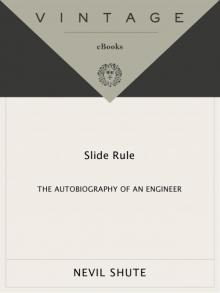 Slide Rule
Slide Rule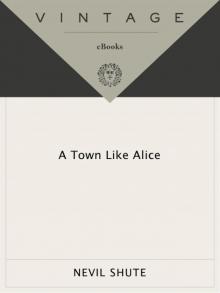 A Town Like Alice
A Town Like Alice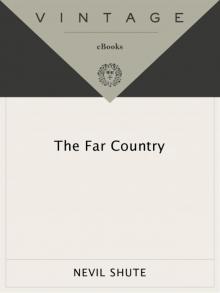 The Far Country
The Far Country Pied Piper
Pied Piper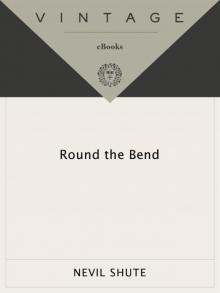 Round the Bend
Round the Bend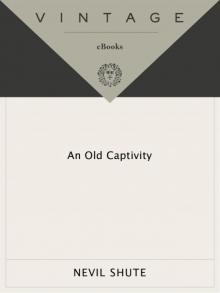 An Old Captivity
An Old Captivity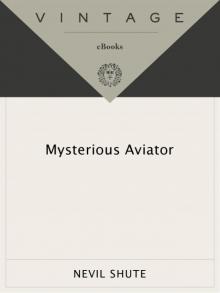 Mysterious Aviator
Mysterious Aviator The Breaking Wave
The Breaking Wave Marazan
Marazan Lonely Road
Lonely Road Pastoral
Pastoral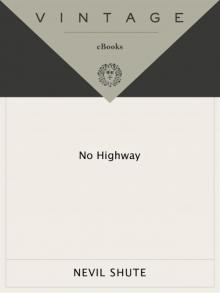 No Highway
No Highway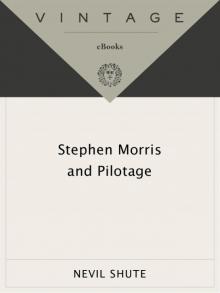 Stephen Morris and Pilotage
Stephen Morris and Pilotage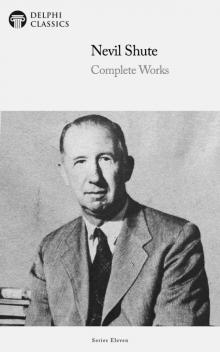 Complete Works of Nevil Shute
Complete Works of Nevil Shute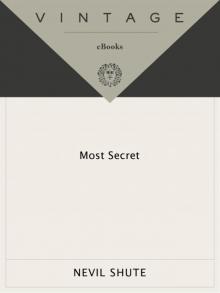 Most Secret
Most Secret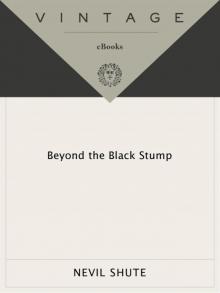 Beyond the Black Stump
Beyond the Black Stump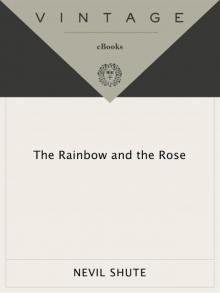 The Rainbow and the Rose
The Rainbow and the Rose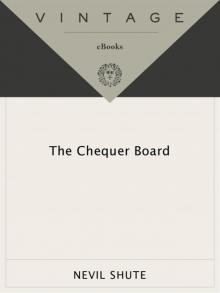 The Chequer Board
The Chequer Board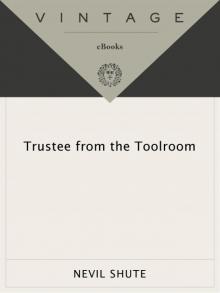 Trustee From the Toolroom
Trustee From the Toolroom Ordeal
Ordeal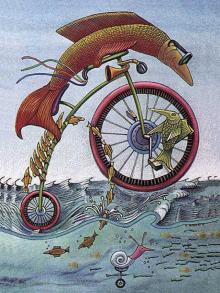 Stephen Morris
Stephen Morris